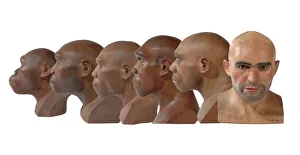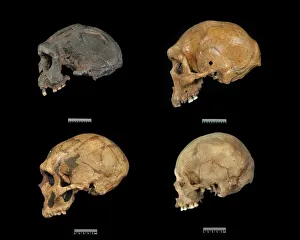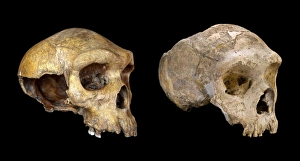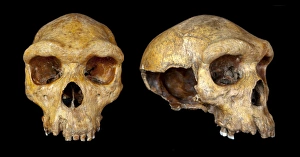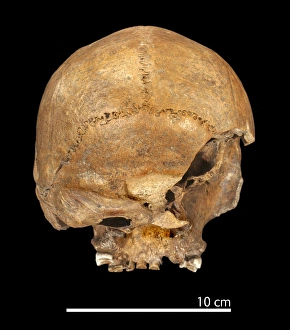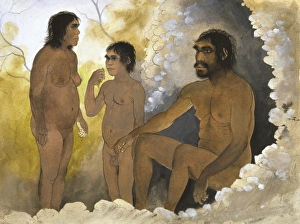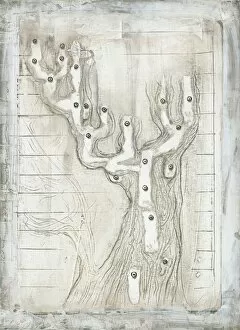Homo Rhodesiensis Collection
"Homo rhodesiensis: Unraveling the Enigmatic Ancestor" Hominid reconstructions in chronological order, from Homo sp
All Professionally Made to Order for Quick Shipping
"Homo rhodesiensis: Unraveling the Enigmatic Ancestor" Hominid reconstructions in chronological order, from Homo sp. Skulls C016 / 5933 to the Broken Hill skull of Homo heidelbergensis, provide a captivating glimpse into our evolutionary past. Among these fascinating specimens lies one that continues to intrigue scientists and enthusiasts alike - Homo rhodesiensis. Often referred to as the "Broken Hill Man, " Homo rhodesiensis holds a significant place in our understanding of human evolution. Believed to have lived approximately 300, 000 years ago, this enigmatic ancestor shares characteristics with both Neanderthals and Homo heidelbergensis. The Broken Hill skull itself is an invaluable artifact that has shed light on various aspects of our ancient lineage. Its robust features and large brain capacity suggest advanced cognitive abilities for its time. As we examine this remarkable specimen further, it becomes evident that Homo rhodesiensis played a crucial role in shaping our species' development. Through comparative analysis with other hominids like Neanderthals and Homo heidelbergensis, researchers have uncovered intriguing connections between these lineages. It appears that while sharing similarities with their contemporaries, such as physical robustness and cranial capacity, Homo rhodesiensis possessed unique traits setting them apart. As we delve deeper into the story of this mysterious ancestor, questions arise about their lifestyle and behavior patterns. Did they possess social structures akin to modern humans? How did they adapt to their environment? These queries continue to fuel scientific exploration as experts strive towards unraveling more secrets surrounding this ancient hominid. Despite limited fossil evidence available today, each discovery brings us closer to comprehending the complex tapestry of human evolution. The significance of Hominid reconstructions in chronological order cannot be overstated; they serve as tangible links connecting us with our distant ancestors like never before.

